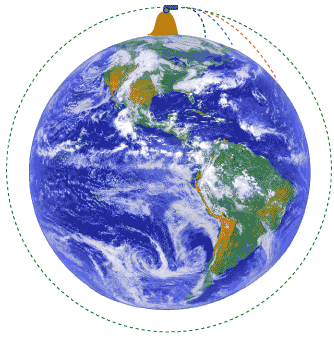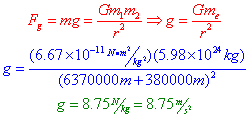How do celestial bodies orbit each other? The moon orbits the Earth. The Earth orbits the sun. Our solar system is in orbit in the Milky Way galaxy… but how does it all work?

To explain orbits, Sir Isaac Newton developed a "thought experiment" in which he imagined a cannon placed on top of a very tall mountain, so tall, in fact, that the peak of the mountain was above the atmosphere (this is important because it allows us to neglect air resistance). If the cannon then launched a projectile horizontally, the projectile would follow a parabolic path to the surface of the Earth.
If the projectile was launched with a higher speed, however, it would travel farther across the surface of the Earth before reaching the ground. If its speed could be increased high enough, the projectile would fall at the same rate the Earth’s surface curves away. The projectile would continue falling forever as it circled the Earth! This circular motion describes an orbit.
Put another way, the astronauts in the Space Shuttle aren’t weightless. Far from it, actually, the Earth’s gravity is still acting on themand pulling them toward the center of the Earth with a substantial force. We can even calculate that force. If the Space Shuttle orbits the Earth at an altitude of 380,000m, what is the gravitational field strength due to the Earth?
Question: If the Space Shuttle orbits the Earth at an altitude of 380 km, what is the gravitational field strength due to the Earth?
Answer: Recall that we can obtain values for G, the mass of the Earth, and the radius of the Earth from the reference table.
This means that the acceleration due to gravity at the altitude the astronauts are orbiting the earth is only 11% less than on the surface of the Earth! In actuality, the Space Shuttle is falling, but it’s moving so fast horizontally that by the time it falls, the Earth has curved away underneath it so that the shuttle remains at the same distance from the center of the Earth — it is in orbit. Of course, this takes tremendous speeds… to maintain an orbit of 380 km, the space shuttle travels approximately 7680 m/s, more than 23 times the speed of sound at sea level!


